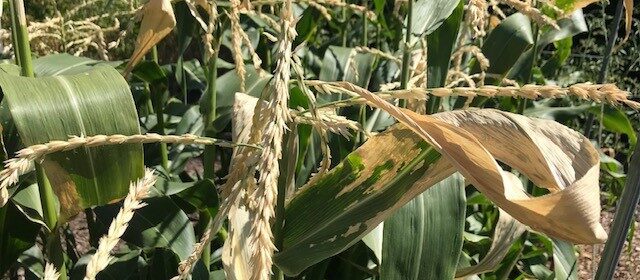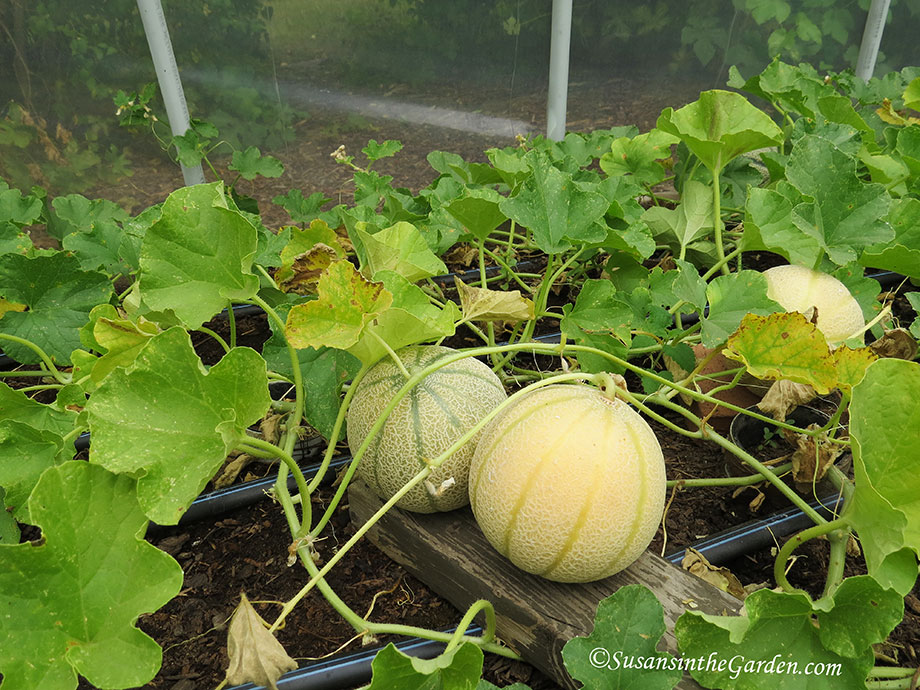Aug. 29 Column: Heat tolerant vegetables

After the blisteringly hot summer we’ve experienced, I thought it would be smart to research heat tolerant vegetables. Will the extreme heat and drought conditions be the “new normal” for us? Well, it never hurts to plan ahead, right?
That’s the topic for today’s garden column, which you can read in The Spokesman-Review: Some veggies can stand the summer heat. (or you can read it underneath the videos below)
I was interested to find the variety names of heat tolerant vegetables. There are many that I’ll be interested to try next year. Do you have recommendations? I’d love to hear from you. Just send an email to Susan@SusansintheGarden.com.
In this week’s video, I demonstrate step 2 of my 3-step pruning process for ripening green tomatoes. Two weeks ago, I covered step 1 and will include that video underneath this week’s. I live in Spokane, Washington, where the hardiness zone is 5b/6. I usually start my tomato-pruning routine about 6 weeks before our average first frost date. In two weeks, I’ll cover the third and final step. I’ll also talk about additional ways to ripen green tomatoes.
Here’s the text of my column about heat tolerant vegetables:
By Susan Mulvihill
For The Spokesman-Review
I’m not sure if our hot, dry summer has more unpleasant surprises in store for us but I’m definitely thinking about how to have a more successful vegetable garden in 2022.
I had mixed results in this year’s garden. The pumpkins, zucchinis and winter squash didn’t seem to mind the intense heat and produced well. The cantaloupes and sweet potatoes, which are growing inside our hoop house, are doing great. I’ve kept both doors open to keep them from getting excessively hot and to allow pollinators access to the melon blossoms.
Before our heat wave hit in late June, the corn had been growing by leaps and bounds. After a few days of 100-plus degree temperatures, the highest leaves on each cornstalk were burned to a crisp. The plants stopped growing but produced our earliest – and smallest – harvest ever. The pole beans, which have always been so reliable, produced far more short, curly beans instead of the long, slender beans we’ve come to expect.
The tomato plants shut down for a few weeks: no blossoms, very few developing fruits and evidence of blossom-end rot on many of them. About half of my carrot varieties bolted to seed.
What’s a gardener to do? Look for more heat-tolerant crops and varieties that might perform better if we’re presented with similar conditions next year.
According to my research, most green beans don’t handle excessive heat very well. Two pole varieties that show potential, however, are ‘Rattlesnake’ and ‘Fortex’. Prevail bush beans have a good reputation as well.
I’ve read about some tomato varieties purported to do well in hot, dry climates but haven’t had any experience growing them. They include ‘Arkansas Traveler’, ‘Grand Marshall’, ‘Great White Beefsteak’, ‘Marvel Stripe’, ‘Purple Calabash’, ‘Solar Flare’ and ‘Summer Set’.
One of my Facebook followers recently suggested that corn varieties grown in the Midwest might be worth trying here if our future summers are as hot and dry as this year’s. My research yielded varieties such as ‘Bodacious’, ‘Honey ‘n Pearl’, ‘Illini Xtra-Sweet’ and ‘Kandy Korn’.
Most varieties of spinach will bolt to seed once summertime temperatures heat up. I don’t believe there are traditional varieties that would make it through the heat we experienced but there are some non-spinach alternatives. The leaves of Malabar spinach have a similar flavor and grow on attractive vines. Red Orach also tastes like spinach and has beautiful purplish-red leaves. New Zealand spinach has succulent stems and leaves which gives them heat tolerance.
I wish there were lettuce varieties that didn’t bolt when hot weather arrives. There are some that are slower to bolt – such as ‘Cherokee’, ‘Muir’, ‘New Red Fire’ and ‘Salvius’ — but all lettuce typically becomes bitter in the heat.
Did your cucumber vines struggle this summer? I recently learned that Armenian cucumbers grow and produce beautifully under hot conditions. They are technically melons but taste like cucumbers and do not become bitter. It might be fun to give them a try next year.
If you grew hot peppers this year, I should offer a word of warning. During normal summers, some gardeners cut back on the water to produce spicier peppers. With our excessive heat and drought, you might be in for a big surprise!
No matter what you grow in the coming summers, I believe a bit of trial and error is in order and I would love to hear which crops and varieties perform best for you.
Susan Mulvihill is author of “The Vegetable Garden Pest Handbook.” She can be reached at Susan@susansinthegarden.com. Watch this week’s “Everyone Can Grow a Garden” video at youtube.com/susansinthegarden.

